In the realm of heating and cooling systems, PTAC (Packaged Terminal Air Conditioner) units have emerged as a reliable and efficient solution for many commercial and residential applications. At MDL Solutions, we recognize the importance of staying at the forefront of technological advancements to provide our clients with the best products and services. PTAC units have become a cornerstone in achieving both comfort and efficiency, transforming how we approach climate control in various settings. By delving into the history and evolution of PTAC units, we can better appreciate their role in enhancing comfort and energy efficiency in today’s modern world.
The Early Days of PTAC Units
Originally designed for hotels and motels in the mid-20th century, PTAC units offered a compact and cost-effective way to control individual room temperatures. These early PTAC units were rudimentary, focusing primarily on basic cooling functions. Their straightforward design and ease of installation made them a popular choice in the hospitality industry, where controlling costs and ensuring guest comfort were paramount. Despite their simplicity, these early PTAC units laid the foundation for the more sophisticated systems we see today. Over the years, the demand for better climate control in various environments has driven the innovation and development of PTAC units, pushing them beyond their humble beginnings.
Technological Advancements
Over the decades, PTAC units have undergone significant advancements, evolving from basic cooling devices into sophisticated systems with a wide range of features. Modern PTAC units are now equipped with state-of-the-art components that not only improve performance but also enhance energy efficiency. Innovations such as programmable thermostats, variable-speed compressors, and advanced filtration systems have made these units more adaptable to various environments.
- Programmable Thermostats: Modern PTAC units come with programmable thermostats that allow users to set specific temperatures for different times of the day. This feature ensures optimal comfort and energy savings by automatically adjusting the temperature based on user preferences and occupancy patterns.
- Variable-Speed Compressors: PTAC units with variable-speed compressors can adjust the speed of the compressor motor to match the cooling demand. This results in lower energy consumption, quieter operation, and extended lifespan of the unit, making them a more sustainable choice for climate control.
- Advanced Filtration Systems: Enhanced air filters in modern PTAC units improve indoor air quality by capturing more pollutants and allergens. This is particularly important in environments where air quality is a concern, such as hospitals, schools, and residential buildings.
These technological advancements in PTAC units have revolutionized the way we think about and manage climate control, providing users with greater flexibility, efficiency, and comfort.
Energy Efficiency and Environmental Impact
One of the most significant improvements in PTAC units is their increased energy efficiency. Older models of PTAC units were often energy hogs, leading to high operational costs and greater environmental impact. Today’s PTAC units are designed with eco-friendly refrigerants and energy-saving technologies that reduce both electricity usage and carbon footprint. This shift towards greener solutions aligns with the growing global emphasis on sustainability and environmental responsibility.
The integration of heat pumps in many PTAC units has also been a game-changer. Heat pumps allow these units to provide both heating and cooling, making them versatile and efficient for year-round use. This dual functionality reduces the need for separate heating systems, further enhancing energy efficiency and reducing installation and maintenance costs. By choosing modern PTAC units, users can enjoy a more sustainable and cost-effective approach to climate control.
The Role of Smart Technology
The advent of smart technology has revolutionized how we interact with PTAC units. Many modern PTAC units can now be controlled remotely via smartphone apps, allowing users to adjust settings from anywhere. This connectivity not only adds convenience but also enables better energy management, as users can make real-time adjustments based on their needs and occupancy patterns.
Smart PTAC units can integrate with other smart home or building management systems, creating a seamless and efficient environment. For example, they can sync with occupancy sensors to adjust the temperature automatically when a room is empty, further reducing energy consumption. Additionally, smart diagnostics and maintenance alerts help ensure that PTAC units operate at peak efficiency, minimizing downtime and extending their lifespan.
Looking to the Future with MDL Solutions
As technology continues to advance, we can expect PTAC units to become even more efficient, user-friendly, and integrated with other smart systems. At MDL Solutions, we are committed to staying ahead of these trends to provide our clients with the latest and greatest in heating and cooling technology. Our team of experts is dedicated to helping you find the perfect PTAC unit to meet your needs and enhance your comfort.
If you’re looking to upgrade your current system or need a new installation, don’t hesitate to contact MDL Solutions. We offer a comprehensive range of services, from consultation and installation to maintenance and repairs, ensuring that your PTAC units operate at their best. Trust MDL Solutions to deliver the expertise and quality you deserve in all your heating and cooling needs.

